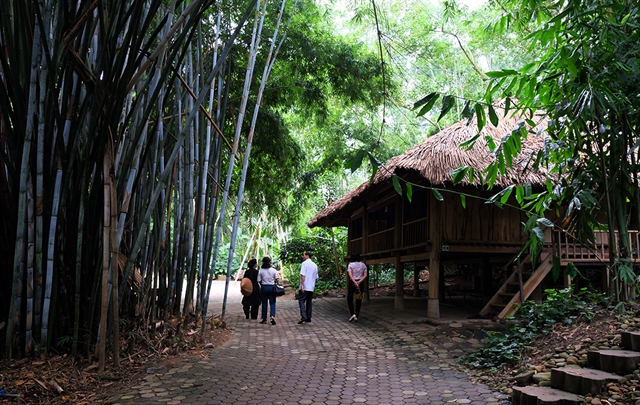
The Thái Hải Stilt House Preservation & Ecological Tourism Village in the northern province of Thái Nguyên. The Vietnamese village has been recognised as one of the ‘Best Tourism Villages 2022’ by the World Tourism Organisation (UNWTO). — Photo courtesy of the Vietnam National Administration of Tourism
HÀ NỘI — The Thái Hải Stilt House Preservation & Ecological Tourism Village in the northern province of Thái Nguyên has been named one of the ‘Best Tourism Villages 2022’ by the World Tourism Organisation (UNWTO).
The Award Ceremony was held on March 12 in Al-'Ula, Saudi Arabia.
The Best Tourism Villages by UNWTO recognises villages that are outstanding examples of rural tourism destinations with accredited cultural and natural assets that preserve and promote rural and community-based values, products, and lifestyle with a clear commitment to innovation and sustainability in all aspects – economic, social and environmental.
A total of 136 villages were put forward for consideration by 57 UNWTO member states (each member state could nominate a maximum of three villages) for the 2022 edition.
From these, 32 from 22 countries were recognised as Best Tourism Villages by UNWTO based on criteria covering nine areas, including Cultural and Natural Resources, Promotion and Conservation of Cultural Resources, and Economic Sustainability.
UNWTO Secretary-General Zurab Pololikashvili said: “For rural communities everywhere, tourism can be a true game changer in providing jobs, supporting local businesses and keeping traditions alive. The Best Tourism Villages by UNWTO showcase the power of the sector to drive economic diversification and create opportunities for all outside of big cities.”
Thái Hải Village is the only representative of Southeast Asia to receive the prestigious award.
Other winners of the awards include Zell am See and Wagrain (Austria), Puqueldón (Chile), Dazhai and Jingzhu (China), Choachí (Colombia), Aguarico and Angochagua (Ecuador), among others.
Located 70km north of Hà Nội and just a short drive from the centre of Thái Nguyên City, the village has 30 original houses built on stilts. They are home to Tày and Nùng ethnic groups and have been relocated here from the Định Hóa Safety Zone.

Thái Hải Village is home to Tày and Nùng ethnic groups who still practise their traditional culture and lifestyle. — Photo courtesy of the Vietnam National Administration of Tourism
Many of the properties are more than half a century old.
More than 100 Tày, Nùng, Cao Lan, Sán Chỉ and Kinh families were encouraged to settle in the village and turn the old deserted hilly land called Bờ Tiên into today’s fertile green areas. Many families have four generations living here.
Sixteen years after its construction, the village is now an ecological site spread over 70ha with lakes packed with 20 different varieties of fish.
Over the years, Thái Hải, with its original cultural space and daily life well preserved by local ethnic for generations, has become an ideal destination for both domestic and foreign tourists. — VNS
OVietnam